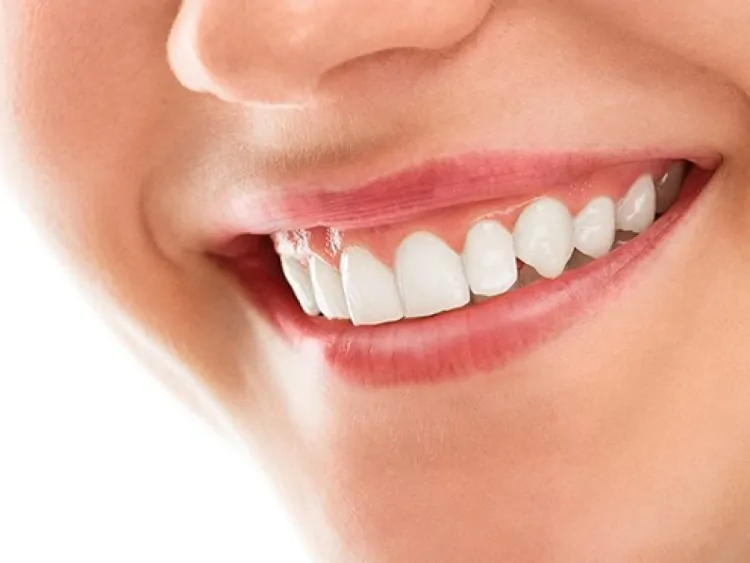The Science Behind Professional Teeth Whitening: What to Expect
A bright, white smile is often associated with health, youth, and confidence.

A bright, white smile is often associated with health, youth, and confidence. While many people opt for over-the-counter whitening solutions, professional teeth whitening has gained popularity for its effectiveness and safety.
But what exactly goes on during a professional teeth whitening treatment, and why is it considered superior to at-home methods? Let’s dive into the science behind professional teeth whitening and what you can expect from the procedure.
How Teeth Become Stained
Before understanding the whitening process, it's important to know how teeth become discolored. Teeth can stain due to two primary reasons: extrinsic stains and intrinsic stains.
Extrinsic stains occur on the outer layer of the tooth (the enamel) and are usually caused by lifestyle habits such as drinking coffee, tea, red wine, or smoking. These stains are often superficial but can become deeply ingrained over time.
Intrinsic stains form within the inner structure of the tooth (the dentin) and can result from factors like aging, certain medications (like tetracycline), or excessive fluoride exposure. These stains are typically harder to remove.
How Professional Teeth Whitening Works
The primary agent in most professional teeth whitening treatments is either hydrogen peroxide or carbamide peroxide. These chemicals break down into oxygen molecules, which penetrate the enamel and dentin to break apart stain compounds. This process not only removes surface stains but also lightens the overall color of the tooth.
Evaluation and Preparation
Your dentist will first examine your teeth to ensure they’re suitable for whitening. Not all types of discoloration respond equally to whitening treatments, and some individuals may have conditions like tooth sensitivity or gum disease that require alternative treatments.
Before starting the procedure, your dentist will clean your teeth to remove any plaque or debris. This allows the whitening agent to work more effectively.
They’ll also protect your gums and soft tissues by applying a barrier or using retractors to keep them away from the whitening solution.
Application of Whitening Agent
Once your teeth are prepared, the dentist will apply a whitening gel that contains the active ingredient (usually hydrogen peroxide). In some systems, the whitening gel may be activated using a special light or laser.
This light helps speed up the breakdown of the whitening agent, allowing the oxygen molecules to penetrate deeper into the enamel.
Whitening Process
The oxygen molecules within the peroxide gel work to break apart the molecular bonds of the discolored pigments in your teeth. This process typically takes 15-30 minutes per session, and your dentist may repeat it a few times depending on the degree of whitening needed.
Final Rinse and Assessment
After the treatment is complete, the dentist will rinse off the whitening gel and remove any protective barriers used to safeguard your gums.
At this point, you’ll be able to see an immediate improvement in the color of your teeth. However, the full results may take a day or two to appear as the whitening effect stabilizes.
What to Expect After Whitening
After the procedure, your teeth may be slightly more sensitive, especially to temperature extremes, but this should subside within a day or two.
Your dentist might provide a fluoride treatment or recommend a desensitizing toothpaste to help alleviate any discomfort.
For optimal results, avoid consuming staining foods and drinks, such as coffee, red wine, or berries, for at least 48 hours after the procedure.
Additionally, maintaining good oral hygiene by brushing, flossing, and using a whitening toothpaste can help prolong the effects of your treatment.
Why Choose Professional Whitening?
While over-the-counter whitening products are widely available, professional teeth whitening offers several advantages:
Stronger Whitening Agents: Dentists use professional-grade whitening agents that are more concentrated than those found in store-bought kits, making them more effective at removing deep stains.
Customization: The dentist can tailor the whitening treatment to your needs, adjusting the concentration of the whitening agent based on your level of sensitivity or desired results.
Supervision and Safety: Whitening done by a professional ensures the protection of your gums and soft tissues, minimizing the risk of irritation or damage.
Faster Results: Professional treatments offer quicker and more dramatic results, often lightening teeth by several shades in just one session.
Long-Lasting Effects: With proper care and occasional touch-ups, professional teeth whitening results can last significantly longer than those achieved with at-home products.
Final Thought
The science behind professional teeth whitening lies in its ability to use potent bleaching agents that effectively penetrate the enamel and dentin to break down stains. The process is designed to be safe, efficient, and customizable, offering you a brighter smile in just a single visit.
If you’re looking for noticeable, lasting results, professional teeth whitening is a reliable choice to enhance your smile and boost your confidence.
What's Your Reaction?















